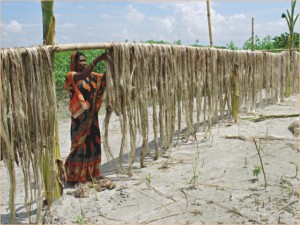YEAR IN BUSINESS
Remittance
Remittance reached $1.05 billion in November, an all-time high in a single month, according to Bangladesh Bank statistics. This record inflow proved Bangladesh's capacity to receive "extraordinary" remittance, beating forecasts that it might fall due to global recession. The previous monthly record was $938 million in August.
Forex Reserve
Bangladesh's foreign exchange reserve crossed the $10 billion mark for the first time in history, riding on buoyant remittance inflows, moderate exports and declining import payments. The central bank expects the reserve to help the country achieve a better sovereign rating currently being conducted by two global firms -- Moody's and Standard and Poor's. The reserve reached $10 billion mainly due to a significant rise in inward remittances despite the global economic slowdown that dealt a blow to many countries with negative growth in their remittances.
Money Transfer by Mobile
An important development in 2009 was approval for money transfer by mobile. Bangladesh Bank had approved the launch of an electronic prepaid card system that will have a mobile payment option. The central bank permitted Trust Bank to act as a settlement bank for digital money transfer. With the card, a customer will be able to deposit and withdraw cash directly from ATMs and all other channels. A card will have a secret PIN to access the service. Also, the system allows an authorised user to transact by mobile.
Bangladesh Bank Governor
Dr Atiur Rahman took the helm of Bangladesh Bank in May 2009 for a four-year tenure as its 10th governor. Rahman has been a renowned economist in his varied roles as a university professor, researcher, banker and a leader in pro-poor, environment-friendly and gender-sensitive development paradigm. He conducted various research works on economic development and published extensively on the micro-finance revolution in Bangladesh. The governor is known for his poor-friendly efforts.
Technology
Telephone Shilpo Sangstha and Cable Shilpo Sangstha had taken up three mega projects to produce digital telephone sets, cellphones, fibre-optic cables, solar panels and laptops in Bangladesh. Of the five products, the digital telephone will cost as low as Tk 500. Cellphones priced between Tk 1,500 and Tk 10,000 will up for sale in January. Fibre optic cables will arrive in December next year.

Loans to Sharecroppers
In September 2009, Bangladesh Bank and nongovernmental organisation BRAC signed an agreement on disbursement of Tk 500 crore in agriculture credit to sharecroppers. Under the deal, BRAC in association with other organisations is distributing the credit across the country. That was the first ever credit allocation for the sharecroppers in the history of Bangladesh.
 |
Quddus Alam/driknews |
Financial Stimulus
Towards the end of 2009, the government rolled out an additional Tk 1,000 crore stimulus package for export-focused industries to ride out the impact of global recession. In April, the government unveiled the first stimulus package of Tk 3,424 crore, but the garment industry was not included. Now the RMG sector will get incentives for three years for exporting to new markets. The ship-building industry, another potential export sector, will be given 5 percent cash assistance under the new package.
 |
afp |
Garment Unrest in June
Angry workers attacked a Ha-Meem Group garment factory and set fire to five of its structures in Ashulia. Amid the raging unrest, the marauding demonstrators also attacked several other roadside factories in the area in one of the worst spells of vandalism in the main export industry. Ha-Meem Group was a victim of rioting over pay by workers of a few sick and sub-contracting factories, who joined hands with some local "jhoot" (garment rejects) traders. Two workers died in the violence.
 |
A M Ahad/driknews |
Green Technology
One of the milestones in 2009 was the adoption of green technology. Bangladesh Bank plans to create a fund to finance carbon trading and asked commercial banks to support carbon-emission trapping projects. The central bank is set to bring necessary changes to its policy to create the carbon trading refinance scheme. It had earlier set up Tk 200 crore refinancing scheme to support solar energy, biogas and effluent treatment projects. Rahimafrooz Renewable Energy Ltd and Eastern Bank Ltd signed a deal to set up the country's first solar panel assembly plant in Savar.
 |
LN |
Listing of Grameenphone
The initial public offering of Grameenphone was a landmark in Bangladesh's capital market history. Its share trade on bourses set a milestone on the day of debut. On Dhaka Stock Exchange, each Grameenphone share opened at Tk 160 and rose as high as Tk 195. It closed up 153 percent at Tk 177.30, compared with the IPO price of Tk 70 each. Although Grameenphone's listing was expected to complete in July 2008, its share trading started around one and a half years later because of several challenges, including global economic downturn and revision of IPO size. The most significant feature is that Grameenphone joined the stock market with the largest-ever issue having 13 crore ordinary shares of Tk 10 each. The offer price was Tk 70 per share, of which Tk 60 was premium.
 |
Compiled By Arun Devnath Photos Star |
|

